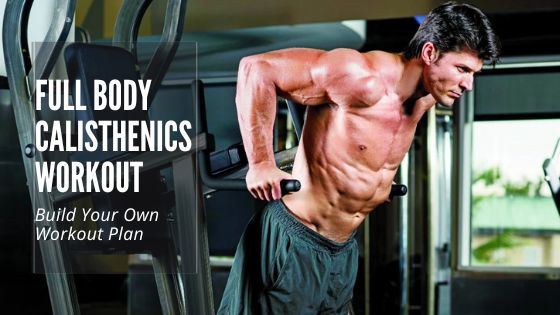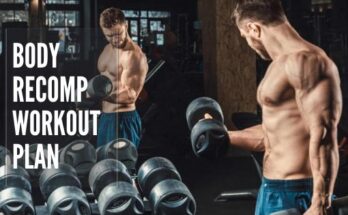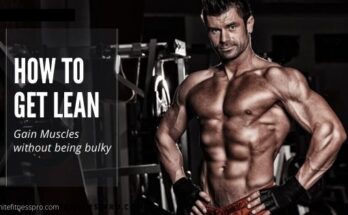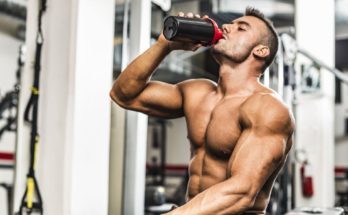Have no gym access? or can’t go out due to lockdown? relax, you don’t need to postpone your fitness goals. Here I am with the calisthenics workout routine which is enough to train your full body and gain muscle.
This science-based article will give you the complete information to train your muscles using only your body. You don’t need to pay for a hefty gym membership to build muscles.
I am going to give you the best calisthenics workout plan which will train your full body. This will include calisthenics exercises for beginners also and how you can do progressions by using different variations. So let’s get started.
What Should A Successful Workout Plan Include?
There are some things that an effective workout plan must include, whether it is a calisthenics workout or a gym workout. To give the best results, a workout plan should include enough exercises to train all the major muscles of your body.
In addition, the intensity and exercise variations are also important to give proper stimulus to your muscles. If it is too intense, then you may get overtrained and if the intensity is too low, then you may get undertrained. In both cases, you won’t see much growth in your muscles.
So there’s no one size fits all. You have to optimize it as per your caliber and fitness level. But some things remain consistent. Let’s talk about them.
You can divide all the exercises roughly into two major categories.
- Pushing movements (hits on your chest, triceps, and shoulders)
- Pulling movements (hits on your back and biceps)
- Squats and lunges (for legs – including quads, hamstring, and glutes)
We’ll have to balance all types of movements to design a perfect full-body calisthenics workout plan. So that no muscle group is left behind and you get a balanced symmetric muscular physique.
Let’s talk about each one of them from a calisthenics perspective.
Pushing Movements
Here are the following pushing movements that we have to include in our workout:
- Pushups (specifically for the chest)
- Pike pushups (for shoulders)
- Dips (for triceps)
Pushups (For chest)
In calisthenics, the most important and most famous pushing movement is pushups. Its primary target muscle is the chest and along with the chest, pushups also hits your triceps and shoulders.
Studies show that pushups are as effective as bench presses for training the chest. The muscle activation in both exercises is almost the same. So pushups are the most effective pushing movement which we have to include in our full body calisthenics workout plan.
How do add pushups to your calisthenics workout plan?
For beginners
As a beginner, you have to look out for your form first. While doing pushups, your form must be correct to hit the target muscles effectively and to reduce injuries.
So put your torso straight, keep an angle of about 45 degrees between your shoulders and arms, and make sure, you feel each n every rep in your muscles.
You can also add incline and decline pushups to your routine along with standard pushups. These variations hit your chest muscles differently and help in the proper development of your chest.
For experienced
After gaining some experience you have to give some more stimulus to your muscles to grow. So at this stage, you need to do pushups, making it difficult for you to perform this exercise.
There are several variations of pushups that makes this exercise very difficult to do. But if you are lifting weights or doing calisthenics and have gained a decent amount of muscle mass, then you can add multiple variations of pushups. Here are some of them:
- Hindu pushups
- Spiderman pushups
- One-arm pushups
- Clap pushups
- Diamond pushups (especially for triceps)
Pike Pushups (for shoulders)
Now we move on to another pushing movement which focuses on your deltoid muscles (shoulders). Unlike standard pushups, where we push our body horizontally, here we push our body vertically upward, against gravity. Due to this, the whole body weight comes on our shoulders.
How to do pike pushups?
You can do pike pushups very easily at your home also. Put your feet on an elevated surface or simply on a chair and your hands on the ground. Move your hips upwards and tighten the core.
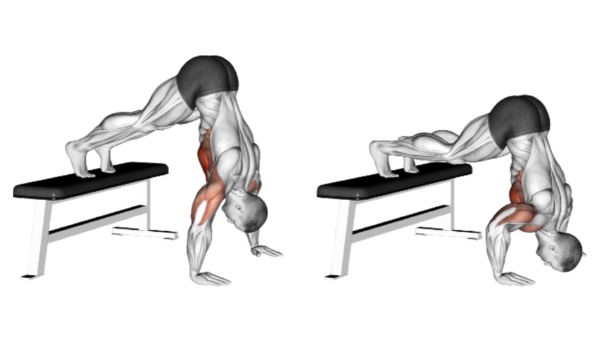
If you are a beginner then start with this position. After gaining some strength and muscle mass, you can elevate your feet to make this exercise more difficult. The more elevated your feet are, the harder it will be to do this exercise.
Keep doing this progression of feet until you can do handstand pushups with wall support. Handstand pushup is an amazing movement for developing shoulders. This exercise puts maximum tension on shoulder muscles.
Dips (for triceps)
After training the chest and shoulders, we left with the triceps which can be trained by pushing movement.
The tricep is a small muscle as compared to the chest and shoulders, and hence, needs less stimulus to grow. Also, it works as the secondary muscle while training the chest and shoulders. So one to two specific exercises are enough to develop triceps.
The major calisthenics movements to train triceps are dips or parallel bars.
How to perform dips?
- Put your hands on a bench and spread your legs on the ground.
- Turn your hands outwards, bend your knees, keep your back straight, and hold your butts in the air.
- Now drop your butts toward the ground and push them upwards, against the gravity. While pushing your body upwards, you have to feel it in your triceps.
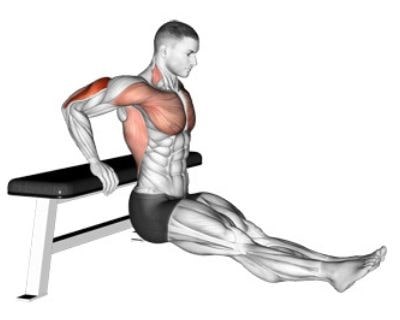
This is the easiest way to perform dips. As you gain strength, you can make this exercise more difficult by putting your legs on another bench at the same level as your hands.
For further advancement, you can put some extra weight on your thighs to give more tension to your triceps.
Pulling Movements
Now it’s time to do some pulling exercises to train our back and biceps. Almost all the calisthenics pulling movements includes pull-ups and chin-ups with different variations.
Among all the major bodyweight movements, pullups are probably the most difficult to do. It’s not easy to pull your body weight upward as you need enough strength in your back muscles.
As a beginner, most people can’t even do one pullup with the correct form. It might take some months to gain enough strength and muscle mass to perform pullups. But don’t worry, there are some alternatives too.
Australian pullups (level-1)
So if you are a newbie and unable to do even one pullup, then start with Australian pullups. This is a great exercise for increasing the thickness of the back. You can also call this exercise the replica of bent-over rows.
How to do Australian Pull-ups?
The set-up of this exercise is very easy and you can do this at your home too. For this, you just need two chairs of equal height. Put a rod on the back of the chair. Make sure that the center of the rod coincides with the center between the chairs.

Chin-ups (level-2)
After gaining some experience, you can go on to the next level and start doing chin-ups. In addition to the back, chin-ups also engage your biceps muscles primarily. That’s why it is comparatively easier to do chin-ups than pull-ups, but still quite difficult for most people.
For beginners, I have divided chin-ups into three phases. Go on to the next phase only after attaining mastery in the previous phase.
#1 Half Chin-ups
If you are unable to do a proper chin-up, then start with doing only the “eccentric part” of chin-ups. This is the part of an exercise that gives stretch to the muscle. In the case of pull-ups or chin-ups, it is the “going down phase” of the movement.
You have to perform only the second half of this exercise. So instead of pulling yourself up, start at the top of the movement and lower yourself gradually.
This way you can give complete stretch to your back and biceps muscles.
#2 Assisted chin-ups
After mastering this, you can take someone’s help in the concentric portion (while going upwards) of the exercise. The person will assist you in going upwards and then you slowly come down on your own.
#3 Chin-ups with full ROM
This is the last phase where you have to try the whole movement with the full range of motion.
Pull-ups (Level-3)
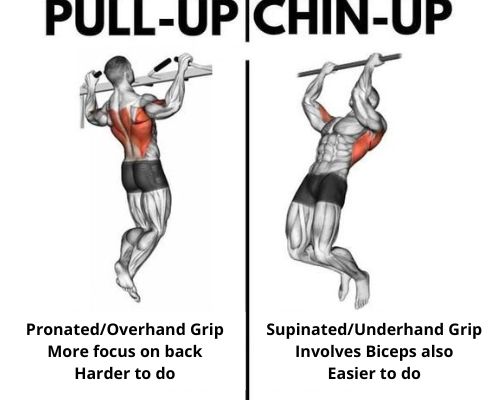
After mastering chin-ups, it’s not that difficult to do pull-ups. However, you can try the same approach in advancing pull-ups as in chin-ups if you want to.
Squats And Lunges
All the exercises we have discussed above are for the upper body. Now let’s talk about the lower body or legs. No doubt, squats, and lunges are one of the best bodyweight exercises for training legs. Also, these movements are very easy to do.
So let’s skip them and look at some variations of squats and lunges. These variations are important for the proper development of your legs.
Side To Side Squats
Unlike normal squats, this movement doesn’t put the same stress on both legs simultaneously. In this exercise, the leg with which you squat works more than the other leg. Due to this, this is slightly more difficult than squats.
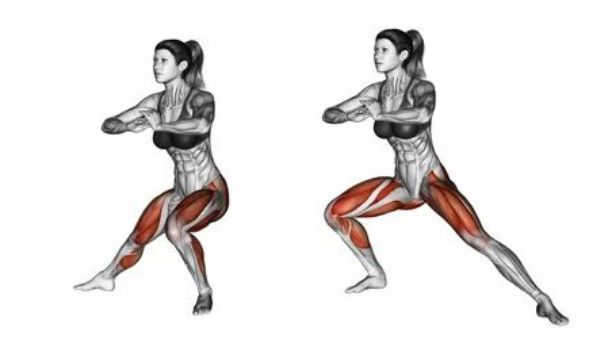
Split Squats/lunges
This is a very important and effective exercise for the whole lower body. You must include this exercise in your calisthenics leg workout routine. In addition to quads, split squats work on your glutes and hamstrings too.
This exercise is almost similar to lunges, but you do it one leg at a time. Unlike lunges, you can’t alternate your legs which makes it more difficult to do.
Bulgarian Split Squats
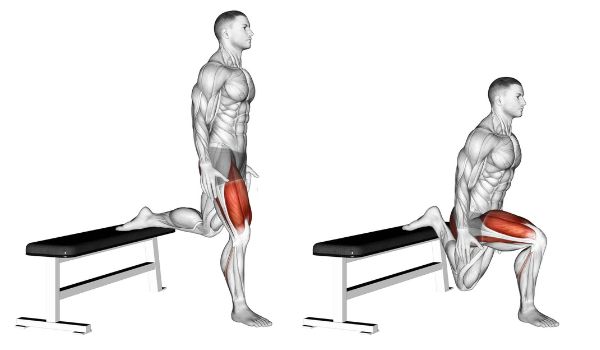
This variation is further more challenging than the split squat. The major difference is that you put your rear leg on an elevated platform or a bench and then perform squats. Due to this posture, it is also called rear foot elevated split squat.
Elevating rear leg increases the ROM of squatting and also put more stress on the front leg (about 85% of bodyweight).
Single-Leg Squats (Pistol Squats)
As the name suggests, this type of squat is done by only one leg at a time, putting another leg in front of the body. This is an absolute unilateral movement as only one leg is working and the other leg has no contact with the ground.
This exercise is quite difficult to do as your whole body weight is on a single leg. Also, it requires good ankle mobility, body balance, and a stable torso.
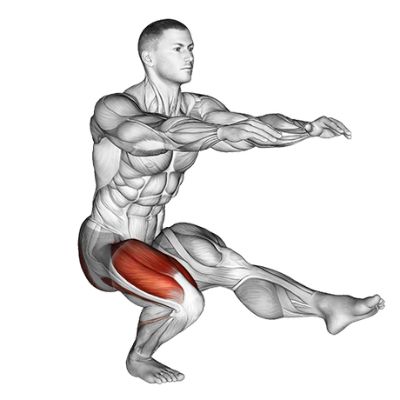
A Sample Full Body Calisthenics Workout Plan
Here is a sample calisthenics workout routine to train full body muscles.
Start with some dynamic warmup exercises to open up your joints and increase blood flow to your muscles. After this, 2-3 minutes of brisk walking and rope jumping to increase your body temperature. Now your body is prepared for the workout.
- Pushups – 3 sets
- Squats – 3 sets
- Pullups – 3 sets
- Split squats – 3 sets
- Pike pushups – 3 sets
- Diamond pushups – 2 sets
- Chinups – 2 sets
Note: Take 1-minute rest after each set and all the exercises must be performed up to failure.
You can follow this routine 3-4 times a week. If you are not a beginner, then do more sets or add more exercises.
Full Body Calisthenics Workout – THE TAKEAWAY
For a successful workout plan, there have to be enough exercises for each n every muscle group. In this article, I have explained various exercises for each body part that doesn’t need any equipment.
Now you can design your own full-body calisthenics workout plan. Just add at least 1-2 exercises for each body part and you are good to go. Just make sure you do every exercise in the correct form. And remember, exercise won’t give results unless your diet is not right.

